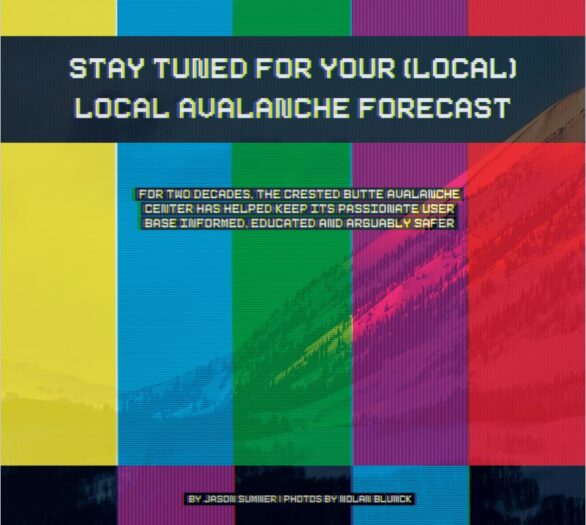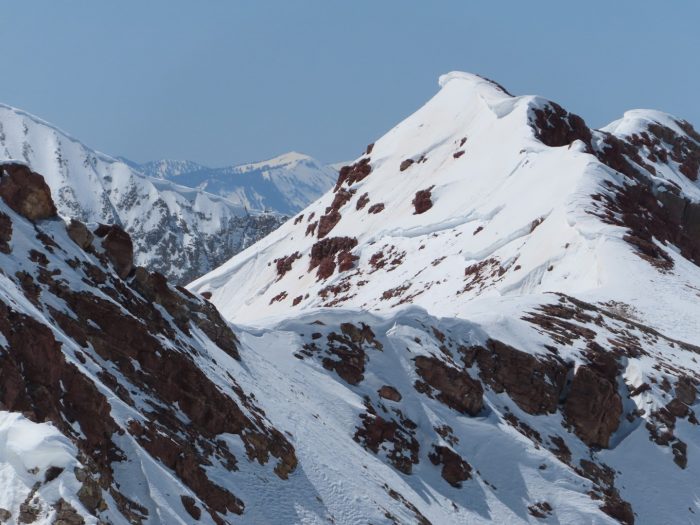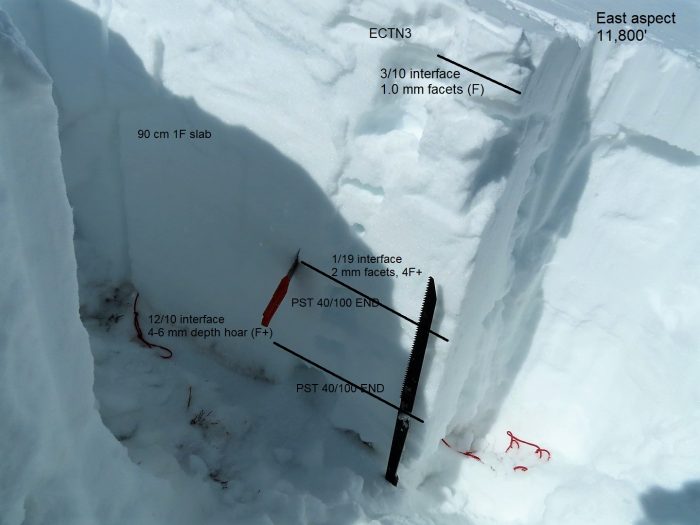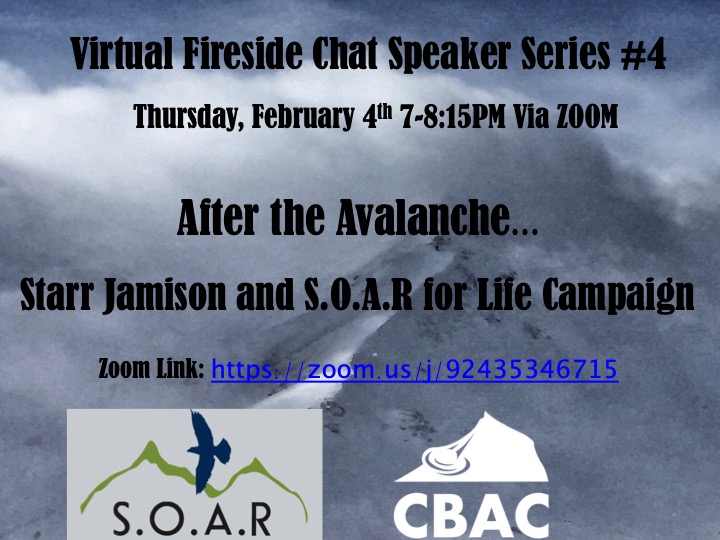The CBAC is featured in this month’s Backcountry Magazine, in an article that highlights the history and current operations of our local avalanche center. You can read the issue here.

The CBAC is featured in this month’s Backcountry Magazine, in an article that highlights the history and current operations of our local avalanche center. You can read the issue here.

Our annual report recaps the horrific snowpack last winter, and how CBAC combated the deadly winter through its operations and outreach efforts. The report also details our user analytics, finances, and outlines goals for next season. Huge thank you to all of our sponsors, donors, and partners who make our efforts possible.
Our final Virtual Fireside Chat of the season is this Tuesday. Dr. Erich Peitzsch, with the U.S.G.S., will be joining us from Glacier National Park, where he has been conducting research on wet avalanches, using drones to study the snowpack, avalanche fatality trends in the U.S., and more. Join us at 7 p.m. on April 13th at this link: https://zoom.us/j/94179033141
RECORDING: Passcode: Rzn5Wv$5

Wet slab that ran during last weekend’s wet cycle on Avery Peak.
An update on our persistent slab problems. March 16, 2021. By Zach Guy, Lead Forecaster
You will notice in our forecasts a change in travel advice, size, and likelihood of the persistent slab problem – a problem that has been on the bulletin all winter. We have several persistent weak layers in the snowpack, and we are restructuring how to present them as avalanche problems as we move forward this week. As much as we’d like our problems to fit into a nice, clean box, often the snowpack blends problems and blurs the lines. Our goal is always to make clear and simple travel advice using avalanche problems as a foundation. For that reason, here are the changes you can expect as our snowpack evolves.


As the story points out, the funding for this avalanche education and outreach program is only temporary, so please hit the button below to help us continue to sustain and grow the program!
Today’s NPR story was actually the second story covering our work this week! In case you missed it, check out the Colorado Sun article on our work linked below:
Thank you for helping us in our 20-year mission of helping Gunnison County residents and visitors enjoy our mountains and come home safely to friends and family.
Dec 20th- Wendy Wagner of the Chugach National Forest Avalanche Information Center.
Jan 7th- Dragons in the snow with Craig Gordon and Ed Power.
Jan 21st- Drew Hardesty, On the nature of forecasting… And why we get it wrong.

Feb 4th- Starr Jamison, Life after the Avalanche.

Feb 18th, 7-8:15 pm – Anne St. Clair, Canadian Forecaster Insights
March 18, Jacks Hutchinson. Left of Whumph and Avy Dogs. zoom link.
Our final Virtual Fireside Chat of the season is this Tuesday. Dr. Erich Peitzsch, with the U.S.G.S., will be joining us from Glacier National Park, where he has been conducting research on wet avalanches, using drones to study the snowpack, avalanche fatality trends in the U.S., and more. Join us at 7 p.m. on April 13th at this link: https://zoom.us/j/94179033141
RECORDING: Passcode: Rzn5Wv$5

WET SLAB THAT RAN DURING LAST WEEKEND’S WET CYCLE ON AVERY PEAK.
The accident investigation from the Snodgrass avalanche incident on December 15, 2020 is available here.
We do our best to describe avalanche accidents to help the people involved and the community as a whole better understand them with the hope that it will help people avoid future avalanche accidents. Thanks to everyone who responded to this incident and helped improve the outcome, and thank you to the party involved for sharing their story to turn it into a learning opportunity for all of us.
The accident investigation from the avalanche fatality that occurred in the Anthracites on December 18th is available here.
We do our best to describe avalanche accidents to help the people involved and the community as a whole better understand them with the hope that it will help people avoid future avalanche accidents. Our condolences go out to the friends, family, and all involved.
Our CBAC interns, Jack Caprio and Jared Berman, will be producing weekly snowpack summaries every Friday under the guidance of our forecast staff. The summaries are a great resource for tracking the evolution of the snowpack and avalanche activity over the course of the winter. You can view the summaries under the “Observations” tab here or under the “Conditions Blog” tab on our forecast page. Below is a teaser of this week’s summary.